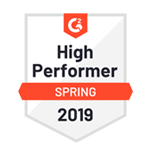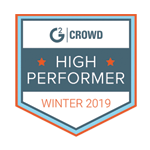Revenue generation in service-based businesses depends fundamentally on converting time into income. Yet many recruitment agencies struggle to distinguish between hours worked and hours that actually generate revenue, leading to profitability challenges despite busy teams.
Billable hours represent the financial heartbeat of recruitment operations. Understanding how to track, optimize, and maximize billable time separates thriving agencies from those working long hours while watching profit margins shrink. Mastering billable hours management transforms recruitment from a chaotic activity into systematic revenue generation.
What are Billable Hours?
Billable hours are the time employees spend on client-related work that can be directly charged to clients at agreed-upon rates. These are the hours your team spends working on a client project that will be paid for by the client at the end of the billing cycle. In service-based businesses, billable hours form the basis for generating revenue, making this billed time essential for profitability.
Activities Included in Billable Hours
Billable hours include time spent on activities directly linked to client deliverables such as candidate sourcing and screening, client meetings and consultations, interview coordination and scheduling, candidate presentations and submissions, salary negotiations and offer management, onboarding coordination, and placement follow-up within contracted service periods.
How Billable Hours Are Charged?
These hours are charged to clients according to agreed hourly rates or contribute toward fixed-fee arrangements by representing the labor cost component of service delivery. The defining characteristic is a direct connection to revenue-generating client work rather than internal operational activities.
Billable vs. Non-Billable Hours
Billable hours differ fundamentally from total hours worked. Recruitment professionals spend significant time on non-billable activities, including internal meetings, administrative tasks, professional development, business development for prospective clients, marketing activities, and general operational overhead. While necessary for business function, these activities don’t generate immediate revenue and cannot be charged to existing clients.
The Importance of Utilization Rate
The distinction matters immensely. A recruiter working 40 hours weekly might have only 25-30 billable hours, depending on operational efficiency. This utilization rate—the percentage of total hours that are billable—directly determines profitability. Higher utilization means more revenue from the same labor investment.
Why Billable Hours Matter for Recruitment Agencies?
The recruitment industry’s shift toward transparency and value-based pricing makes billable hours tracking essential for sustainable operations and competitive positioning.
Revenue optimization depends on maximizing billable hours
The US staffing industry is a $198.7 billion industry entering 2025, yet individual agencies struggle with profitability when billable hours remain untracked or underutilized. Every non-billable hour represents a lost revenue opportunity that competitors are capturing efficiently as an advantage.
Profitability correlates directly with utilization rates
Service businesses typically target 60-75% billable hour ratios for profitability. Recruitment agencies falling below these thresholds despite adequate client volume face margin pressures. Understanding where time goes enables strategic adjustments that protect profitability without requiring client volume increases.
Client pricing accuracy requires a time tracking foundation
Fixed-fee recruitment contracts demand accurate labor costs. Without billable hours data, agencies cannot determine whether engagements are profitable or loss leaders. Time tracking reveals which client types, industries, or position levels generate healthy margins versus those consuming disproportionate resources.
Team productivity becomes measurable objectively
Billable hours provide concrete metrics for evaluating individual and team performance. Two recruiters might both work full weeks, but one generates 32 billable hours while another produces only 18, revealing significant efficiency differences requiring investigation and coaching.
Resource allocation improves through utilization analysis
Tracking billable versus non-billable time identifies where operational inefficiencies exist. If recruiters spend excessive hours on administrative tasks, technology investments, or support staff additions might improve overall profitability by freeing billable capacity.
Capacity planning requires billable hours visibility
Growing recruitment agencies must understand current billable capacity before adding clients. If existing teams operate at 85% utilization, additional clients require hiring. Conversely, teams at 55% utilization have capacity for growth without headcount increases.
Industry trends demand operational efficiency
Research shows that 45% of business leaders spend more than half their time on talent acquisition tasks. This time intensity makes billable hours optimization critical. Agencies streamlining non-billable activities capture market share from less efficient competitors.
Client transparency expectations increase
Sophisticated clients increasingly demand detailed breakdowns of services provided and time invested. Agencies tracking billable hours can provide this transparency, building trust and justifying fees through documented effort. Those unable to articulate time investment risk appear overpriced regardless of actual value delivered.
How to Use Billable Hours Effectively?
Maximizing billable hours requires systematic tracking, strategic optimization, and cultural commitment to distinguishing revenue-generating activities from necessary overhead.
Implement time tracking systems organization-wide
Manual time logging creates incomplete data riddled with recall errors. Invest in time tracking software that integrates with project management and applicant tracking systems. Real-time logging captures accurate data that historical reconstruction cannot match. Make tracking mandatory and easy to ensure compliance.
Define billable versus non-billable categories explicitly
Create clear guidelines specifying which activities count as billable. Ambiguity leads to inconsistent tracking that produces meaningless data. Document examples of each category and train team members until classification becomes intuitive. Regular calibration sessions maintain consistency across the agency.
Set realistic utilization targets by role
Senior recruiters focused on complex placements might target 65-70% utilization, while junior recruiters handling higher-volume positions could target 75-80%. Account managers balancing existing clients and new business might target 50-60%. Role-specific targets acknowledge different job function realities rather than applying uniform expectations.
Track time in small increments daily
Waiting until the week’s end to reconstruct time allocation produces inaccurate estimates. Require time logging in 15-minute increments throughout each day. This granularity reveals time leakage that hour-based tracking misses while activities remain fresh in memory.
Analyze billable hours data regularly for insights
Monthly reviews of utilization rates, billable versus non-billable ratios, and time distribution across activities reveal optimization opportunities. Which activities consume disproportionate non-billable time? Where do inefficiencies hide? Data-driven insights enable targeted improvements.
Automate non-billable tasks wherever possible
Technology can handle many administrative activities that currently consume recruiter time. Automated interview scheduling, resume parsing, candidate communication sequences, and compliance documentation reduce non-billable hours while improving consistency. Each automated task converts previously non-billable time into available billable capacity.
Delegate non-specialized work to lower-cost resources
Senior recruiters shouldn’t perform administrative tasks that coordinators can handle at lower labor costs. Strategic delegation preserves expensive billable hours for revenue-generating activities only senior talent can perform, improving overall agency profitability.
Establish minimum billable commitments for retainer clients
Fixed-fee arrangements require defined scope boundaries. Specify that fees include a certain number of billable hours monthly, with overages triggering additional billing. This structure protects against scope creep that erodes profitability while maintaining pricing transparency.
Educate clients about billable hours
Help clients understand how their behavior affects billable time requirements. Frequent last-minute changes, inadequate position documentation, or slow feedback cycles consume extra hours. Clients appreciating these dynamics often modify behaviors, reducing unnecessary billable time consumption.
Reward high utilization without encouraging burnout
Recognize recruiters maintaining strong billable ratios while delivering quality work. However, avoid creating incentives that sacrifice placement quality for utilization metrics. Sustainable high performance balances billable hours with effectiveness and team well-being.
Common Challenges with Billable Hours
Despite clear benefits, billable hours tracking and management introduce challenges that recruitment agencies must navigate skillfully to realize value without creating counterproductive dynamics.
Time tracking resistance undermines adoption
Many recruiters view time logging as a bureaucratic burden that interrupts workflow. This resistance leads to incomplete or inaccurate data that provides limited value. Overcoming requires demonstrating how time tracking benefits individuals through workload visibility and fair performance evaluation rather than serving purely as management surveillance.
Classification ambiguity creates inconsistent data
Gray areas between billable and non-billable activities generate confusion. Is business development with existing clients billable or not? What about learning about a client’s industry to serve them better? Inconsistent classification across team members produces incomparable data requiring extensive cleanup.
Pressure to maximize billable hours can sacrifice quality
When agencies overemphasize utilization metrics, recruiters may rush candidate screening, skip thorough reference checks, or reduce client communication quality to log more billable hours. This short-term metric optimization damages long-term placement success and client relationships.
Fixed-fee models complicate billable hours
Many recruitment agencies operate on contingency or fixed-placement fees rather than hourly billing. In these models, billable hours don’t translate directly to invoices, potentially reducing perceived tracking value. However, internal cost understanding remains critical even when client billing uses different structures.
Non-billable time necessity creates a utilization ceiling
No agency achieves 100% billable utilization sustainably. Professional development, business development, internal meetings, and administrative tasks are necessary investments in business health. Unrealistic utilization targets ignore these necessities, creating unachievable expectations that demoralize teams.
Client perception of hourly billing can trigger resistance
Some clients perceive hourly billing as incentivizing inefficiency—why work faster if you’re paid by the hour? This perception challenges agencies transitioning to time-based billing models. Value-based pricing framing that emphasizes outcomes rather than hours worked addresses these concerns.
Time tracking administrative burden consumes time itself
The irony of time tracking is that tracking time requires time. Complex systems with excessive categorization demands create significant non-billable overhead. Streamlined tracking approaches, balancing data value against capture effort, optimize this trade-off.
Multi-client task switching complicates accurate attribution
Recruiters often juggle multiple clients simultaneously, switching contexts frequently throughout the day. Attributing time precisely when tasks overlap or blend challenges accurate tracking. Real-time logging reduces but doesn’t eliminate these attribution difficulties.
Project scope creep erodes billable hours value
Clients requesting additional services beyond original agreements consume billable hours without corresponding revenue increases. Without clear boundaries and change order processes, agencies work extra hours that never convert to income, destroying profitability despite high utilization rates.
Billable hours visibility can create client disputes
When clients see detailed hour breakdowns, they may question why certain tasks require reported time. “Why did sourcing take 15 hours?” queries create defensive positions requiring justification. Managing these conversations demands diplomatic skills, balancing transparency with efficient defense.
Remote work complicates time tracking oversight
Distributed teams make validating time tracking accuracy more difficult. Managers cannot observe work patterns directly, requiring trust that logged hours reflect actual work. This dynamic raises concerns about both under-reporting (incomplete tracking) and over-reporting (inflated hours).

















